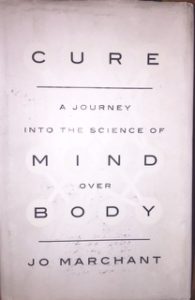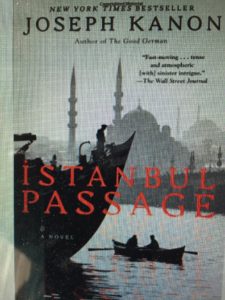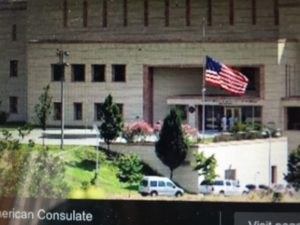I belong to a book club that usually reads fiction, and I’ve read a lot of good stories that I would never have otherwise: Circling the Sun by Paula McLain, Empire Rising by Rick Campbell and Istanbul Passage by Joseph Kanon, to name a few. But most of the time I prefer nonfiction, books like Hillbilly Elegy by J. D. Vance, I Am Nujood, Age 10 and Divorced by Nujood Ali with Delphine Minoui and My Promised Land by Ari Shavit.
So, when I came across the book, Cure: A Journey Into the Science of Mind Over Body by Jo Marchant*, I wasn’t confident that this was the right book club to bring it to. I suggested it anyway because I was so impressed with its ideas. The group agreed, and we discussed it last week at our monthly luncheon at Paesano’s in Ann Arbor.
Everyone was very taken with the fact that there is a scientific basis for believing that “our thoughts, emotions, and beliefs can ease pain, heal wounds, fend off infection and heart disease and even slow the progression of AIDS and some cancers.”**
One of the things that impressed all of us was the idea that if you take a pill that’s a placebo, even knowing it’s a placebo, you may improve. This just seems counter-intuitive. But, it’s true.
Another idea was the importance of distraction. When burn patients have their dressings changed, it’s extremely painful. And their dressings have to be changed every day. This is a nightmare scenario.
But, if that same patient puts on virtual reality goggles and plays a computer game called “Snow World” in an ice cold environment, the patient’s pain score goes DOWN by 35%. That, plus the 40% pain reduction the patient gets from medication, makes changing the dressings each day manageable.
Cure also talks about the importance of social connections. Studies show that besides feeling good after spending an afternoon with friends, people who frequently socialize also live longer.
Now, the mind, even in the best of circumstances, can’t heal everything or make you well if you have cancer or a broken arm and refuse to get treatment. What it can do is improve your mood, make your medical care more effective and help you to enjoy what you do have.
There are many other helpful ideas in Cure. So if I’ve excited your curiosity, I hope you check out the book. I think you’ll be glad you did.
*Cure: A Journey Into the Science of Mind Over Body by Jo Marchant, Crown Publishers, New York, 2016.
**From the inside cover of Cure.


